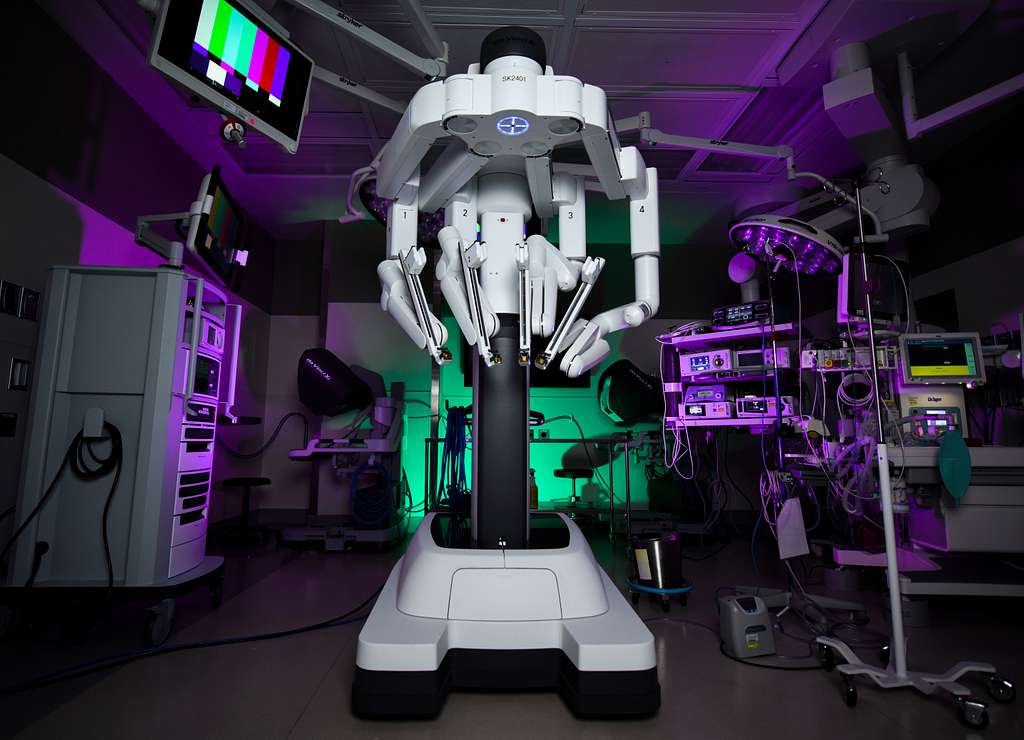Robotic surgery represents a significant advancement in modern medical technology. This minimally invasive approach uses robotic systems to assist surgeons during procedures, providing enhanced precision and control. The technology combines computer-guided instruments with high-definition 3D visualization to perform complex operations through small incisions. Here is more information on the types of robotic procedures available:
Cardiovascular Applications
Robotic surgery can address conditions affecting the heart and major blood vessels. Surgeons perform robotic coronary artery bypass procedures by accessing the heart through small incisions between the ribs rather than opening the entire chest. The robotic system allows precise suturing of tiny blood vessels with enhanced dexterity.
Mitral valve repair represents another common robotic cardiovascular procedure. The surgeon operates through ports in the chest while controlling robotic arms that manipulate specialized instruments. The three-dimensional camera system provides magnified views of the heart valve, allowing for detailed repair work on damaged tissue.
Robotic procedures also address atrial septal defect closures and other congenital heart conditions. The technology enables surgeons to work within confined spaces of the heart while maintaining steady, tremor-free movements. Patients typically experience shorter hospital stays and faster return to normal activities compared to traditional open-heart surgery.
Urological Uses
Urological surgery encompasses procedures involving the kidneys, bladder, prostate, and reproductive organs. Robotic prostatectomy has become a standard treatment for prostate cancer, allowing surgeons to remove the prostate gland while preserving surrounding nerves and tissues. The procedure uses four to six small incisions in the abdomen.
Robotic kidney surgery includes both partial and complete kidney removal procedures. Surgeons can remove kidney tumors while preserving healthy kidney tissue through precise dissection techniques. The robotic system’s articulated instruments bend and rotate beyond the capabilities of the human hand, facilitating complex reconstructive work.
Robotic cystectomy involves bladder removal for bladder cancer treatment. The procedure requires intricate reconstruction of the urinary tract, which the robotic system facilitates through enhanced visualization and instrument precision. Surgeons can perform bladder reconstruction using intestinal tissue while maintaining optimal positioning throughout the lengthy procedure.
Gynecological Utilizations
Gynecological surgery addresses conditions of the female reproductive system. Robotic hysterectomy removes the uterus through small abdominal incisions rather than a large open incision or vaginal approach. The procedure treats conditions including uterine fibroids, endometriosis, and gynecological cancers.
Robotic myomectomy removes uterine fibroids while preserving the uterus for women who wish to maintain fertility. The surgeon uses robotic instruments to carefully dissect fibroids from the uterine wall and reconstruct the uterine muscle. The procedure requires precise suturing techniques to restore the uterus to its normal anatomy.
Endometriosis treatment through robotic procedures involves removing endometrial tissue that has grown outside the uterus. Surgeons can access areas throughout the pelvis and abdomen to remove adhesions and endometrial implants. The magnified visualization helps identify small areas of endometriosis that might be missed during traditional surgery.
Learn More About Robotic Surgery
Robotic surgery continues to expand across medical specialties as technology advances. The systems provide surgeons with enhanced capabilities while offering patients less invasive treatment options. Each type of robotic surgery requires specialized training and expertise to achieve optimal outcomes. Patients exploring surgical options should discuss robotic procedure availability with their healthcare providers to determine appropriate treatment approaches for their specific conditions.









Leave a Reply